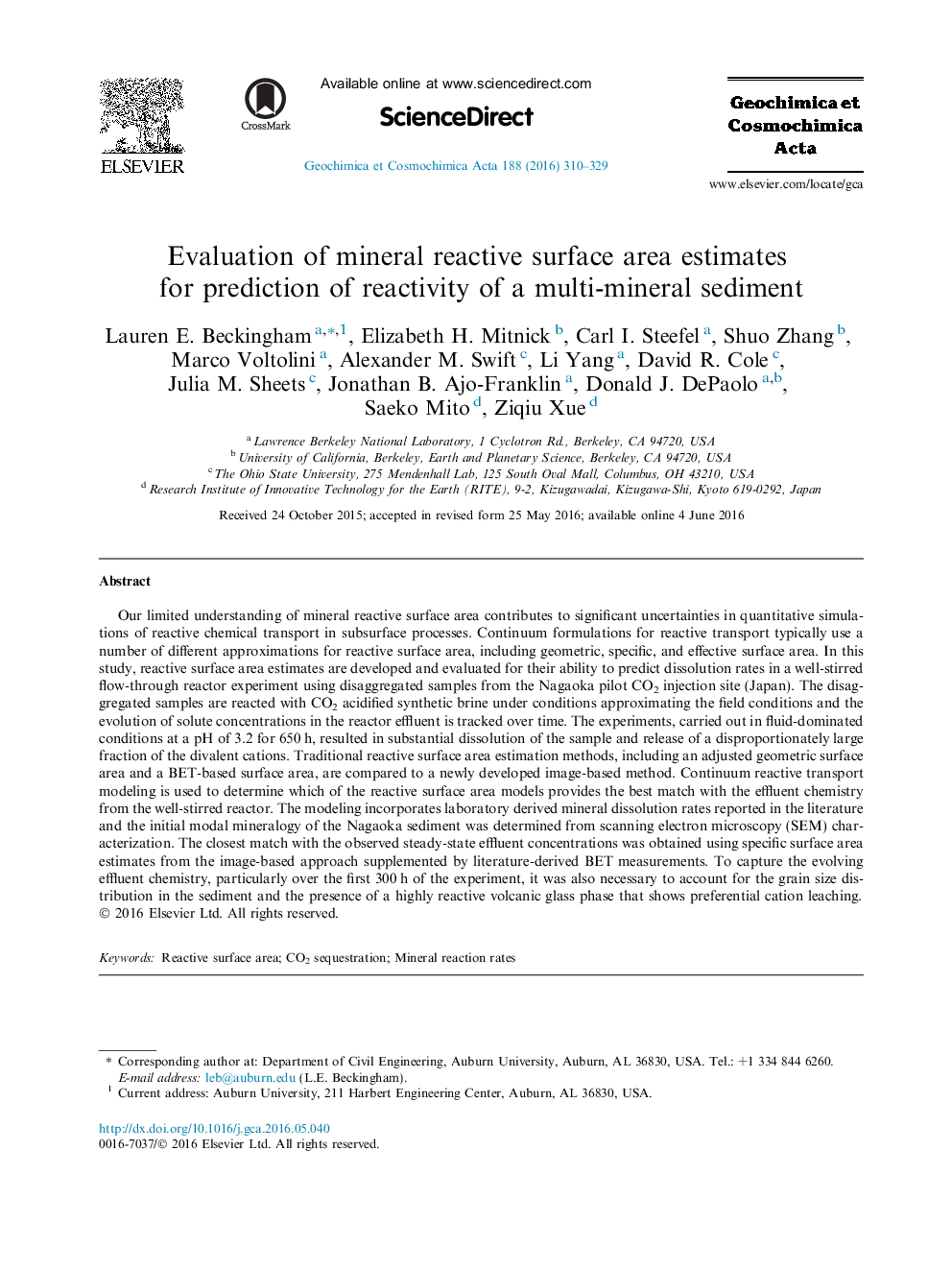| Article ID | Journal | Published Year | Pages | File Type |
|---|---|---|---|---|
| 4701775 | Geochimica et Cosmochimica Acta | 2016 | 20 Pages |
Our limited understanding of mineral reactive surface area contributes to significant uncertainties in quantitative simulations of reactive chemical transport in subsurface processes. Continuum formulations for reactive transport typically use a number of different approximations for reactive surface area, including geometric, specific, and effective surface area. In this study, reactive surface area estimates are developed and evaluated for their ability to predict dissolution rates in a well-stirred flow-through reactor experiment using disaggregated samples from the Nagaoka pilot CO2 injection site (Japan). The disaggregated samples are reacted with CO2 acidified synthetic brine under conditions approximating the field conditions and the evolution of solute concentrations in the reactor effluent is tracked over time. The experiments, carried out in fluid-dominated conditions at a pH of 3.2 for 650 h, resulted in substantial dissolution of the sample and release of a disproportionately large fraction of the divalent cations. Traditional reactive surface area estimation methods, including an adjusted geometric surface area and a BET-based surface area, are compared to a newly developed image-based method. Continuum reactive transport modeling is used to determine which of the reactive surface area models provides the best match with the effluent chemistry from the well-stirred reactor. The modeling incorporates laboratory derived mineral dissolution rates reported in the literature and the initial modal mineralogy of the Nagaoka sediment was determined from scanning electron microscopy (SEM) characterization. The closest match with the observed steady-state effluent concentrations was obtained using specific surface area estimates from the image-based approach supplemented by literature-derived BET measurements. To capture the evolving effluent chemistry, particularly over the first 300 h of the experiment, it was also necessary to account for the grain size distribution in the sediment and the presence of a highly reactive volcanic glass phase that shows preferential cation leaching.
